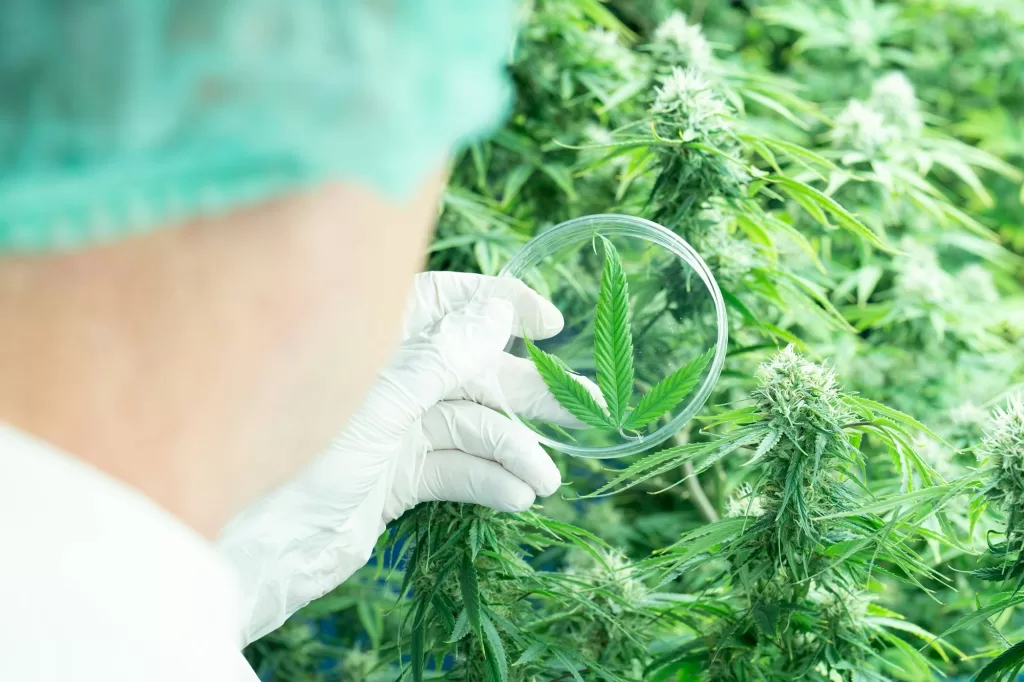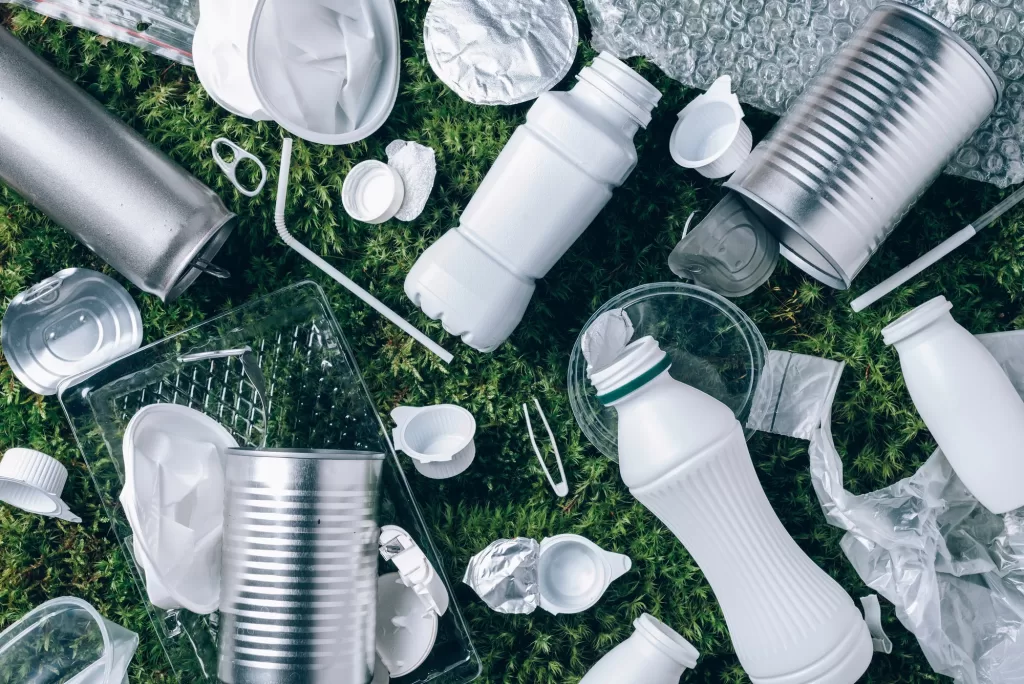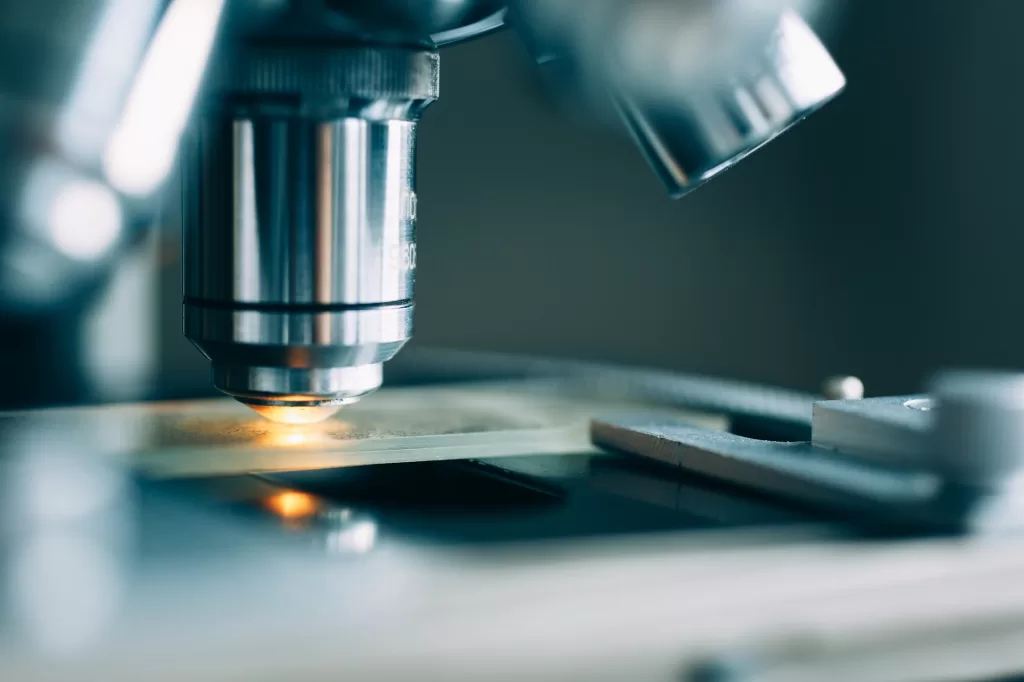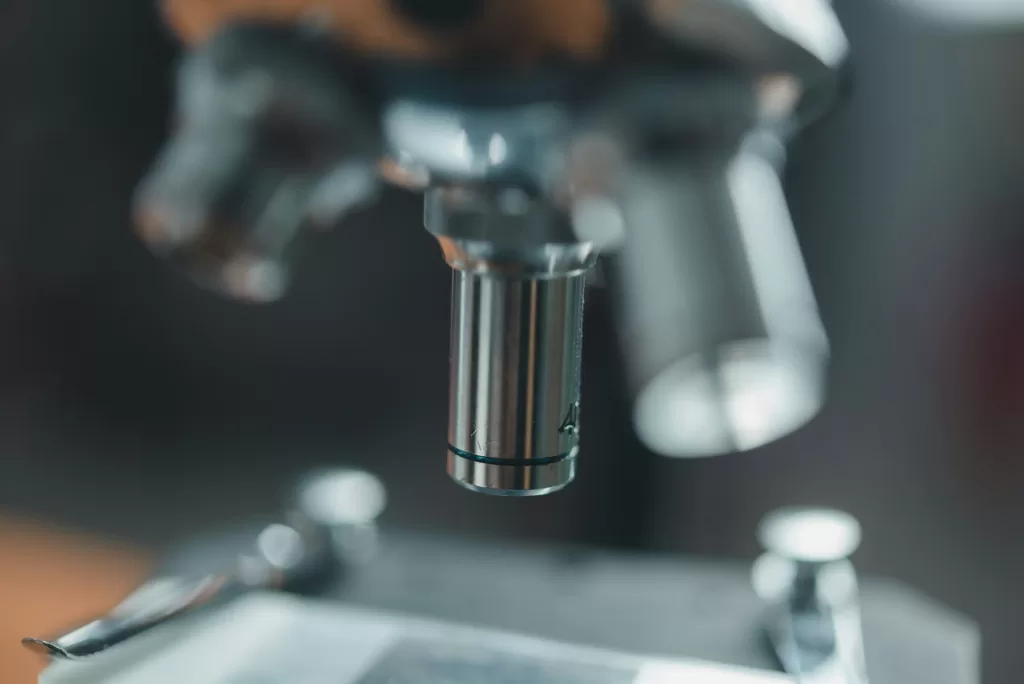What are Pesticides?
According to World Health Organization (WHO) Pesticides are chemical compounds that are used to kill pests, including insects, rodents, fungi and unwanted plants (weeds). Pesticides are used in public health to kill vectors of disease, such as mosquitoes, and in agriculture, to kill pests that damage crops. By their nature, pesticides are potentially toxic to other organisms, including humans, and need to be used safely and disposed of properly. By using pesticides growers can maximize their yield and character of hemp and cannabis, however pesticides may be toxic if they remain in the product and their adverse effects into the final product.
Why Analyze for Pesticides in Hemp And Cannabis?
Pesticides that are used in cultivation of Cannabis and Hemp might characterized as , non-toxic, and food safe, however it can still pose a threat to consumer health when applied to cannabis during the flowering stage, especially if they are then concentrated in the cannabis product that being inhaled. Traditional chronic pesticide exposure has been linked to neurodegenerative disease, diabetes, respiratory disease, birth defects, many forms of cancer, and fertility and reproductive problems. These risks may be compounded by the heat damage of smoking, making the testing of cannabis products all the more important. In the absence of federal regulations governing pesticides in cannabis production, the use of pesticides not registered by the U.S. Environmental Protection Agency is understood to be illegal. The range of state standards and the lack of a federal role in establishing which pesticides are allowed for use in the plant’s production raises critical concerns related to exposure from inhalation, ingestion, or absorption of pesticide residues on the crop. Although EPA does not establish restrictions for pesticides used in cannabis production, or tolerances, however states have sought to address this issue by and establishing a list and the tolerance levels in plants and the final products.
Services and capabilities?
Through chemical analysis, our team identifies the presence and concentration of different Pesticides compounds in cannabis plant and their products, which are reported as a weight-based percentage. Below are the list Terpenes that AccuScience reports;

Instrumentation and techniques
We perform our Pesticides analysis on state-of-the-art Agilent Technologies 6470 LC/MS/MS following a solvent extraction of the samples. The procedure of using liquid or gas chromatography for a particular pesticide is determined by the environment that the pesticide is most stable in. Some pesticides destabilize at the high temperature of the GC instrument and are best analyzed by LC.
Having the right equipment is critical, but it is only part of the equation, and the human element remains relevant and important. The AccuScience management team has more than 100 years of collective analytical testing experience, and we work in a testing facility set to the standards of ISO17025 for pharmaceutical and environmental laboratories. By strictly following these guidelines, we deliver the most accurate and legally defensible results in the industry.
Sample Amount needed: 1 gram.
Sample Amount needed: 1 gram.
| Abamectin |  | Acephate |  |
| CAS # | 71751-41-2 | CAS # | 30560-19-1 |
| Formula | C48H72O14 (B1a) C47H70O14 (B1b) | Formula | C4H10NO3PS |
Mass | 1732.1 g/mol | Mass | 183.16 g/mol |
| Acequinocyl |  | Acetamiprid |  |
| CAS # | 57960-19-7 | CAS # | 135410-20-7 |
| Formula | C24H32O4 | Formula | C10H11ClN4 |
| Mass | 384.51 g/mol | Mass | 222.678 g/mol |
| Aldicarb |  | Azoxystrobin |  |
| CAS # | 116-06-3 | CAS # | 131860-33-8 |
| Formula | C7H14N2O2S | Formula | C22H17N3O5 |
| Mass | 190.26 g/mol | Mass | 403.388 g/mol |
| Bifenazate |  | Bifenthrin |  |
| CAS # | 149877-41-8 | CAS # | 82657-04-3 |
| Formula | C17H20N2O3 | Formula | C23H22ClF3O2 |
| Mass | 300.35 g/mol | Mass | 422.87 g/mol |
| Boscalid |  | Captan |  |
| CAS # | 188425-85-6 | CAS # | 133-06-2 |
| Formula | C18H12Cl2N2O | Formula | C9H8Cl3NO2S |
| Mass | 343.21 g/mol | Mass | 300.58 g/mol |
| Carbaryl |  | Carbofuran |  |
| CAS # | 63-25-2 | CAS # | 1563-66-2 |
| Formula | C12H11NO2 | Formula | C12H15NO3 |
| Mass | 201.225 g/mol | Mass | 221.256 g/mol |
| Chlorantraniliprole |  | Chlordane |  |
| CAS # | 500008-45-7 | CAS # | 57-74-9 |
| Formula | C18H14BrCl2N5O2 | Formula | C10H6Cl8 |
| Mass | 483.15 g/mol | Mass | 409.76 g/mol |
| Chlorfenapyr |  | Chlorpyrifos |  |
| CAS # | 122453-73-0 | CAS # | 2921-88-2 |
| Formula | C15H11BrClF3N2O | Formula | C9H11Cl3NO3PS |
| Mass | 407.62 g/mol | Mass | 350.57 g/mol |
| Clofentezine |  | Coumaphos |  |
| CAS # | 74115-24-5 | CAS # | 56-72-4 |
| Formula | C14H8Cl2N4 | Formula | C14H16ClO5PS |
| Mass | 303.15 g/mol | Mass | 362.77 g/mol |
| Cyfluthrin |  | Cypermethrin |  |
| CAS # | 68359-37-5 | CAS # | 52315-07-8 |
| Formula | C22H18Cl2FNO3 | Formula | C22H19Cl2NO3 |
| Mass | 434.29 g/mol | Mass | 416.30 g/mol |
| Daminozide |  | Dichlorvos |  |
| CAS # | 1596-84-5 | CAS # | 62-73-7 |
| Formula | C6H12N2O3 | Formula | C4H7Cl2O4P |
Mass | 160.173 g/mol | Mass | 220.97 g/mol |
| Diazinon |  | Dimethoate |  |
| CAS # | 333-41-5 | CAS # | 60-51-5 |
| Formula | C12H21N2O3PS | Formula | C5H12NO3PS2 |
| Mass | 304.34 g/mol | Mass | 229.26 g/mol |
| Dimethomorph |  | Ethoprophos |  |
| CAS # | 110488-70-5 | CAS # | 131947-48-4 |
| Formula | C21H22ClNO4 | Formula | C8H19O2PS2 |
| Mass | 387.857 g/mol | Mass | 242.33 g/mol |
| Etofenprox |  | Etoxazole |  |
| CAS # | 80844-07-1 | CAS # | 153233-91-1 |
| Formula | C25H28O3 | Formula | C21H23F2NO2 |
| Mass | 376.496 g/mol | Mass | 359.417 g/mol |
| Fenhexamid |  | Fenoxycarb |  |
| CAS # | 126833-17-8 | CAS # | 72490-01-8 |
| Formula | C14H17Cl2NO2 | Formula | C17H19NO4 |
| Mass | 302.20 g/mol | Mass | 301.34 g/mol |
| Fenpyroximate |  | Fipronil |  |
| CAS # | 111812-58-9 | CAS # | 120068-37-3 |
| Formula | C24H27N3O4 | Formula | C12H4Cl2F6N4OS |
| Mass | 421.49 g/mol | Mass | 437.14 g/mol |
| Flonicamid |  | Fludioxonil |  |
| CAS # | 158062-67-0 | CAS # | 131341-86-1 |
| Formula | C9H6F3N3O | Formula | C12H6F2N2O |
| Mass | 229.162 g/mol | Mass | 248.189 g/mol |
| Hexythiazox |  | Imazalil |  |
| CAS # | 78587-05-0 | CAS # | 35554-44-0 |
| Formula | C17H21ClN2O2S | Formula | C14H14Cl2N2O |
| Mass | 352.88 g/mol | Mass | 297.18 g/mol |
| Imidacloprid |  | Kresoxim-methyl |  |
| CAS # | 138261-41-3 | CAS # | 143390-89-0 |
| Formula | C9H10ClN5O2 | Formula | C18H19NO4 |
| Mass | 255.661 g/mol | Mass | 313.35 g/mol |
| Malathion |  | Metalaxyl |  |
| CAS # | 121-75-5 | CAS # | 57837-19-1 |
| Formula | C10H19O6PS2 | Formula | C15H21NO4 |
| Mass | 330.358 g/mol | Mass | 279.33 g/mol |
| Methiocarb |  | Methyl parathion |  |
| CAS # | 2032-65-7 | CAS # | 298-00-0 |
| Formula | C11H15NO2S | Formula | C10H14NO5PS |
Mass | 225.312 g/mol | Mass | 291.26 g/mol |
| Methomyl |  | Mevinphos |  |
| CAS # | 16752-77-5 | CAS # | 7786-34-7 |
| Formula | C5H10N2O2S | Formula | C7H13O6P |
| Mass | 162.20 g/mol | Mass | 224.149 g/mol |
| MGK-264ᵃ a ( N-Octyl bicycloheptene dicarboximide ) |  | Myclobutanil |  |
| CAS # | 113-48-4 | CAS # | 88671-89-0 |
| Formula | C17H25NO2 | Formula | C15H17ClN4 |
| Mass | 275.39 g/mol | Mass | 288.78 g/mol |
| Naled |  | Oxamyl |  |
| CAS # | 300-76-5 | CAS # | 23135-22-0 |
| Formula | C4H7O4PBr2Cl2 | Formula | C7H13N3O3S |
| Mass | 380.8 g/mol | Mass | 219.26 g/mol |
| aclobutrazol |  | Pentachloronitrobenzene |  |
| CAS # | 76738-62-0 | CAS # | 82-68-8 |
| Formula | C15H20ClN3O | Formula | C6Cl5NO2 |
| Mass | 293.80 g/mol | Mass | 295.32 g/mol |
| Permethrins |  | Phosmet |  |
| CAS # | 52645-53-1 | CAS # | 732-11-6 |
| Formula | C21H20Cl2O3 | Formula | C11H12NO4PS2 |
| Mass | 391.29 g/mol | Mass | 317.31 g/mol |
| Piperonyl butoxide |  | Prallethrin |  |
| CAS # | 51-03-6 | CAS # | 23031-36-9 |
| Formula | C19H30O5 | Formula | C19H24O3 |
| Mass | 338.438 g/mol | Mass | 300.40 g/mol |
| Propiconazole | Propoxur |  | |
| CAS # | 60207-90-1 | CAS # | 114-26-1 |
| Formula | C15H17Cl2N3O2 | Formula | C11H15NO3 |
| Mass | 342.22 g/mol | Mass | 209.245 g/mol |
| Pyrethrins |  | Pyridaben |  |
| CAS # | 8003-34-7 | CAS # | 96489-71-3 |
| Formula | C21H28O3 | Formula | C19H25ClN2OS |
| Mass | 328.4 g/mol | Mass | 364.93 g/mol |
| CAS # | CAS # | ||
| Formula | Formula | ||
| Mass | Mass |
| Spinetoram A |  | Spinetoram D |  |
| CAS # | 187166-15-0 | CAS # | 187166-40-1 |
| Formula | C43H69NO10 | Formula | C43H69NO10 |
Mass | 760 g/mol | Mass | 760 g/mol |
| Spinosad A |  | Spinosad D |  |
| CAS # | 168316-95-8 | CAS # | 131929-63-0 |
| Formula | C41H65NO10 | Formula | C42H67NO10 |
| Mass | Mass | ||
| Spiromesifen |  | Spirotetramat |  |
| CAS # | 283594-90-1 | CAS # | 203313-25-1 |
| Formula | C23H30O4 | Formula | C21H27NO5 |
| Mass | 370.48 g/mol | Mass | 373.449 g/mol |
| Spiroxamine |  | Tebuconazole |  |
| CAS # | 118134-30-8 | CAS # | 107534-96-3 |
| Formula | C18H35NO2 | Formula | C16H22ClN3O |
| Mass | 297.48 g/mol | Mass | 307.82 g/mol |
| Thiacloprid |  | Thiamethoxam |  |
| CAS # | 111988-49-9 | CAS # | 153719-23-4 |
| Formula | C10H9ClN4S | Formula | C8H10ClN5O3S |
| Mass | 252.72 g/mol | Mass | 291.71 g/mol |
| Trifloxystrobin |  | ||
| CAS # | 141517-21-7 | ||
| Formula | C20H19F3N2O4 | ||
| Mass | 408.37 g/mol |








